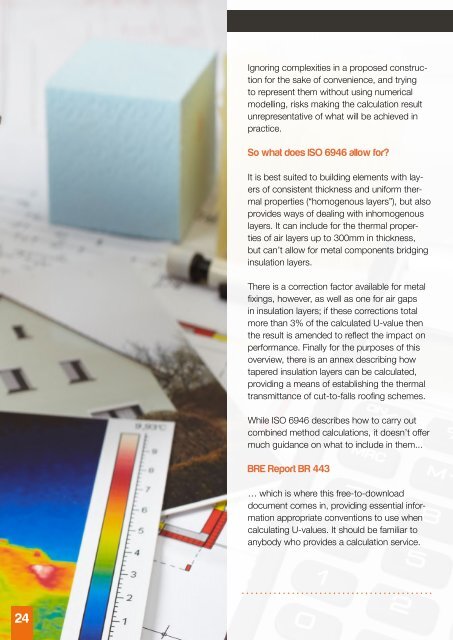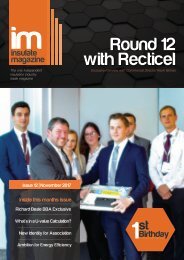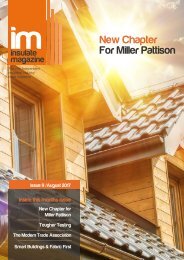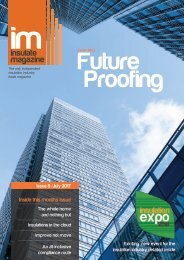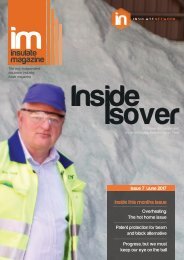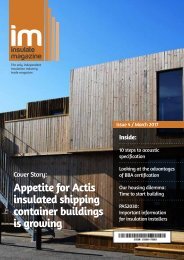Insulate Magazine Issue 11
Create successful ePaper yourself
Turn your PDF publications into a flip-book with our unique Google optimized e-Paper software.
Ignoring complexities in a proposed construction<br />
for the sake of convenience, and trying<br />
to represent them without using numerical<br />
modelling, risks making the calculation result<br />
unrepresentative of what will be achieved in<br />
practice.<br />
So what does ISO 6946 allow for?<br />
It is best suited to building elements with layers<br />
of consistent thickness and uniform thermal<br />
properties (“homogenous layers”), but also<br />
provides ways of dealing with inhomogenous<br />
layers. It can include for the thermal properties<br />
of air layers up to 300mm in thickness,<br />
but can’t allow for metal components bridging<br />
insulation layers.<br />
There is a correction factor available for metal<br />
fixings, however, as well as one for air gaps<br />
in insulation layers; if these corrections total<br />
more than 3% of the calculated U-value then<br />
the result is amended to reflect the impact on<br />
performance. Finally for the purposes of this<br />
overview, there is an annex describing how<br />
tapered insulation layers can be calculated,<br />
providing a means of establishing the thermal<br />
transmittance of cut-to-falls roofing schemes.<br />
While ISO 6946 describes how to carry out<br />
combined method calculations, it doesn’t offer<br />
much guidance on what to include in them...<br />
BRE Report BR 443<br />
… which is where this free-to-download<br />
document comes in, providing essential information<br />
appropriate conventions to use when<br />
calculating U-values. It should be familiar to<br />
anybody who provides a calculation service.<br />
24


